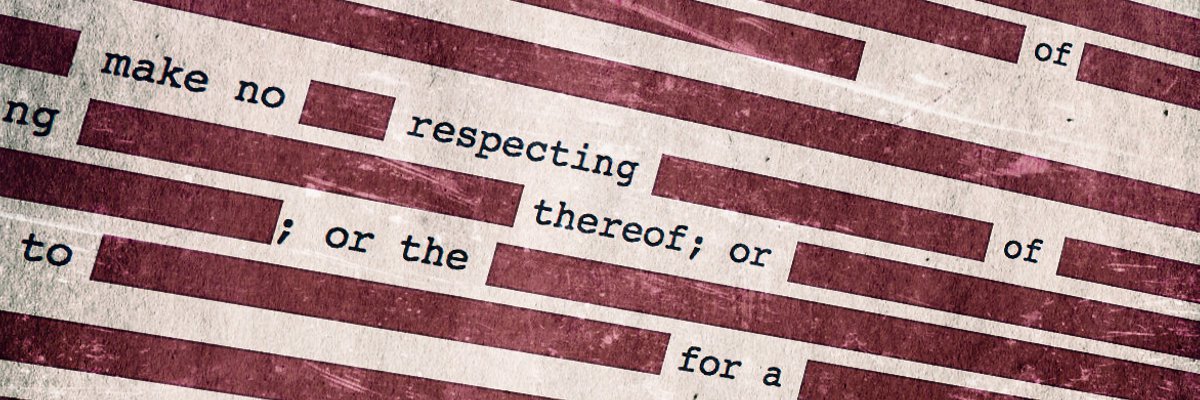Soon after legendary spymaster and Central Intelligence Agency counterintelligence chief James Jesus Angleton’s intelligence career supposedly ended with his forced retirement in December 1974 due to the exposure of CIA wrongdoing, he returned to the Agency, where counterintelligence operations reportedly remained under his purview until late 1975.
Documents obtained by obtained by MIT national security researcher Ryan Shapiro and shared exclusively with MuckRock show that the Agency soon signed a Top Secret contract with Angleton after his much publicized firing. The documents also show that both Angleton and CIA Director Colby gave misleading testimony to the Church Committee about this. A previously classified internal CIA History also raises doubts about the nature of Angleton’s contract work by contradicting CIA’s public statements. Part one of this article explores his rehiring and the lies directly surrounding it, while later parts will reexamines CIA’s “war in heaven” including the possibly libelous “Monster Plot” report and the circumstances surrounding Angleton’s fall from grace.
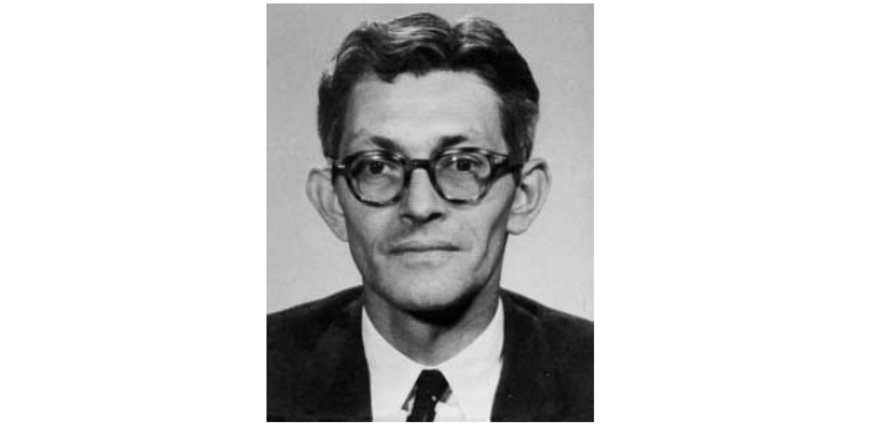
Angleton’s departure from his post as the Agency’s counterintelligence chief was announced in late December 1974, though he would be associated with the “unofficial intelligence community” called CIN as well as acting as a consultant to members of Congress, at least one CIA Commission, and the President’s Foreign Intelligence Advisory Role. While a small handful of the Agency’s historians have acknowledged that Angleton spent time at the Agency following his forced retirement, they’ve done so in ways that are, at best, incomplete. For example, Cleveland Cram’s unclassified history says Angleton spent some of the following months at the Agency “introducing members of the new CI Staff” to people. However, both the description of Angleton’s activities there and the timeline are contradicted in official documents described below.

In another version very similar to Cram’s, an Agency spokesperson in early 1975 described Angleton as officially retired but continuing to work at CIA headquarters, serving as a consultant aiding in the transition to George Kalaris, Angleton’s replacement as CIA’s counterintelligence chief. The description of Angleton as officially retired was misleading, and the Agency’s partial admission was likely prompted only by the fact that the media had already followed Angleton on his way to work at CIA headquarters a month before.
According to documents reviewed by the FBI, CIA’s internal files show that Angleton was officially on the Agency’s payroll as a contract employee in 1975. As of this writing, the CIA has failed to release these records, having exceeded twenty three times over the time limit in which they’re legally required to do so. When asked why the CIA hadn’t yet responded to the FOIA request, the Agency declined to comment.

Less than a week before Angleton was granted the Top Secret Contract clearance, Congress had questioned the CIA’s handling of Angleton’s retirement at a briefing delivered by the CIA Director.

It was almost immediately after this that Angleton received the Distinguished Intelligence Medal. A letter from the FBI Director and addressed to Angleton at CIA Headquarters confirms that Angleton was known within the Intelligence Community to still be working at CIA headquarters.
CIA’s files in 1980, some of which were shared with the FBI, indicate that Angleton’s “intermittent contract as a Consultant” with the CIA had officially began on April 1st 1975, a week before he received the Distinguished Intelligence Medal and the FBI Director’s congratulatory letter - but nearly a month after Angleton was followed going to work at CIA Headquarters and three months after his public retirement.
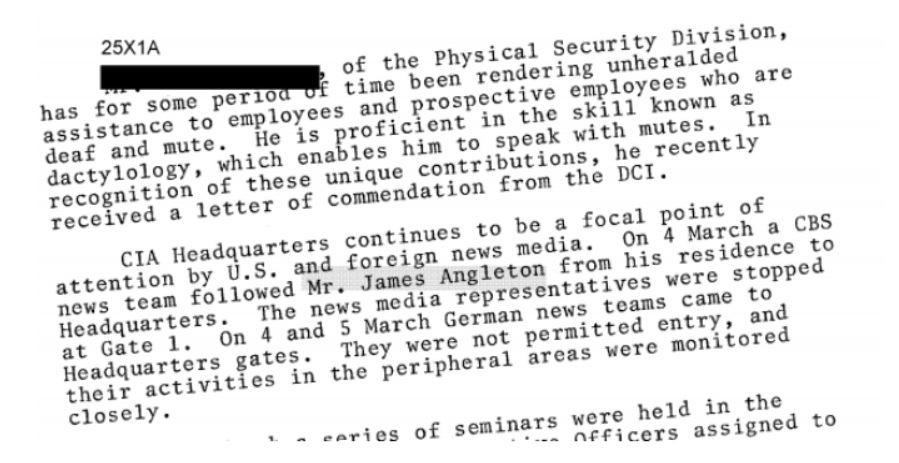
The dates of the consultant contract, which ended on September 30th, 1975, appear to have been provided by someone from CIA’s personnel office, while the date the Top Secret Contract clearance was granted appears to have been derived from the security file provided by the Agency’s representative. The contract paid Angleton the same amount that he received as CIA’s Counterintelligence Chief at the time of his retirement, assuming a five day work week.
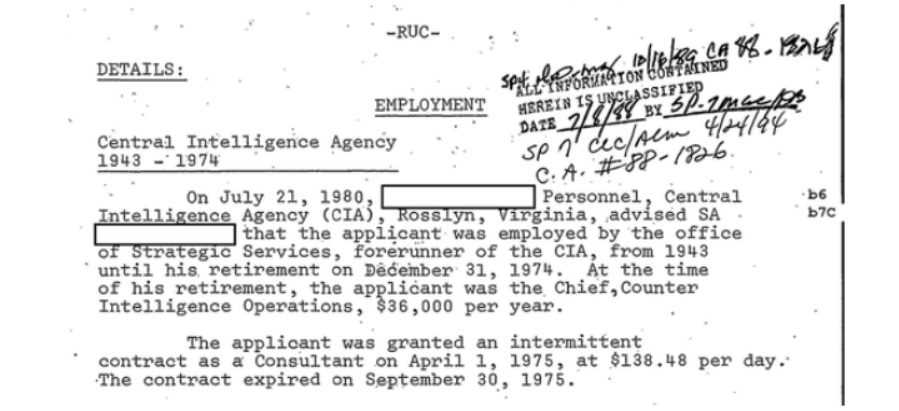
While the original contract expired in September 1975, the State Department’s website indicates that reciprocity would mean that the clearance granted on February 26 of the same year would remain valid for at least five years, during which time CIA would be free to renew the contract or sign a new one. Coincidentally, a new background check was conducted five years later and a new security clearance granted to allow Angleton to aid the defense of Mark Felt, Edward Miller, and L. Patrick Gray. Angleton had previously started the Security and Intelligence Fund/Foundation to help with the defense in the case against former FBI Agent John Kearney, a case which essentially morphed into the case against Felt, Miller and Gray.

The question of whether or not the contract was renewed or a new one signed can only be answered by the documents the CIA has refused to release. The dates of the known contract, however, are at odds not only with the public histories, but with what the Agency’s leadership reported to Congress in their classified testimony. When asked if the contract was renewed and when Angleton’s final contract with the CIA expired, the Agency declined to comment. This opacity seems to be nothing new, with even the Church Committee appearing to have been mislead on the matter.
In his May 23 1975 testimony before the Church Committee, Senator Church directly asked CIA Director Colby if James Angleton was being paid by the Agency as a consultant. According to the transcript, originally classified TOP SECRET, Colby replied that he believed it had “dropped off.” Continuing, Colby said that Angleton “did help us for three or four months but I believe that it is terminated. It is about time to terminate it.”
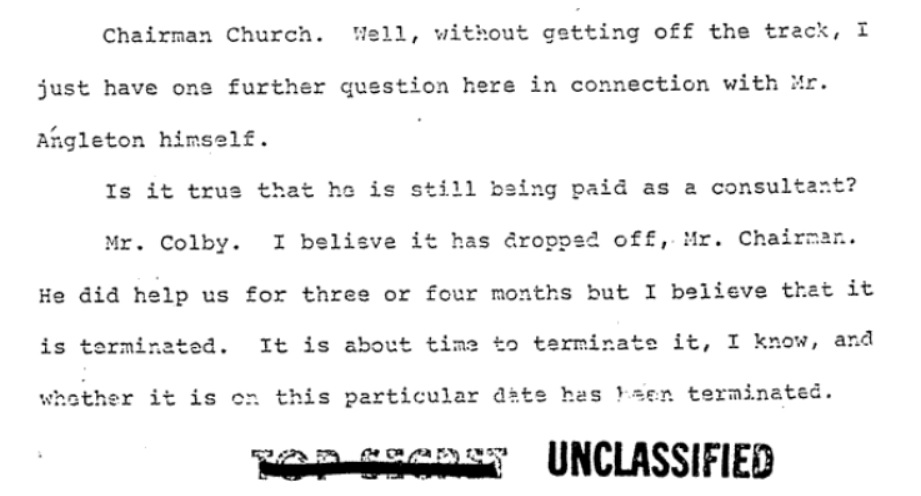
The “three or four months” mentioned by Colby lined up with when Angleton was dismissed, but not when he was granted the clearance or when the contract started.Colby’s “three or four months” were about twice what the official contract’s dates reflect. The record shows that the contract continued for more than four months after Colby said that it was “time to terminate it.”According to the transcript, Colby denied the Agency had a plan to “retain him indefinitely” and added that the Agency had set itself “about [a] six month period” which “was to help us get over this transition and phase [Angleton] out.”
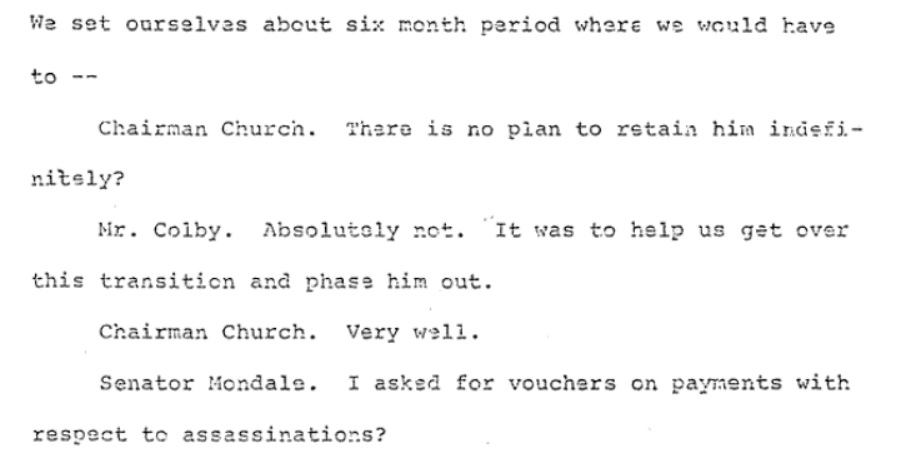
The dates provided by Colby are further undermined by anecdotal accounts that appear to confirm the dates of the contract. According to Joseph Trento’s Prelude to Terror, “it took Angleton nine months to clean out his desk” after his public retirement in 1974.
When asked if either the Agency or Colby had corrected this by providing the Church Committee with accurate information, the Agency declined to comment. When asked if Angleton had worked for the Agency prior to the beginning of the contract - which might explain the Director’s erroneous testimony - the Agency declined to comment. When asked to confirm the CIA Director’s description of Angleton’s contract work as being limited to the transition, the Agency again declined to comment.
Angleton himself may have been even more dishonest with the Church Committee, as his declassified testimony fails to acknowledge the consultant work at all. When asked in his classified Executive Session testimony of June 19th 1975 about his employment with the Agency, Angleton responded that he had been with them “from the beginning until December, the end of December.”

When asked to clarify the year, Angleton confirmed that he had meant December 1974.

When Angleton again testified before the Church Committee on September 25th, 1975 he once more described his CIA employment as having ended in 1974, and asserted that he was retired. His contract with the Agency was not set to expire until September 30th. When asked if the Agency was aware of any reason for why Angleton would have omitted this mention, such as compartmentalization or separate briefings, an Agency spokesperson declined to comment.

In classified testimony given a few years later, Angleton described this time period as the Agency keeping him “on ice for the Church Committee.” Notably, at least some of Angleton’s Church Committee testimony was given well after his original contract with the Agency expired - raising additional questions about the timeline.

Angleton’s apparent omissions in his testimony before the Church Committee have a slightly greater significance in light of the fact that the CIA Director had intervened with the Department of Justice (DOJ) when it came time for Angleton to testify before the Church Committee. As a result, according to a letter written by the CIA Director, the DOJ “acted immediately to retain counsel for Mr. Angleton” with “respect to the taking of depositions by and appearances before” the Church Committee.

Curiously, in his testimony before the House Select Committee on Assassinations, Angleton appears to deny having had counsel while giving testimony and depositions before the Church Committee. His testimony before the Church Committee, however, confirms that he was represented by John T. Brown during the proceedings.
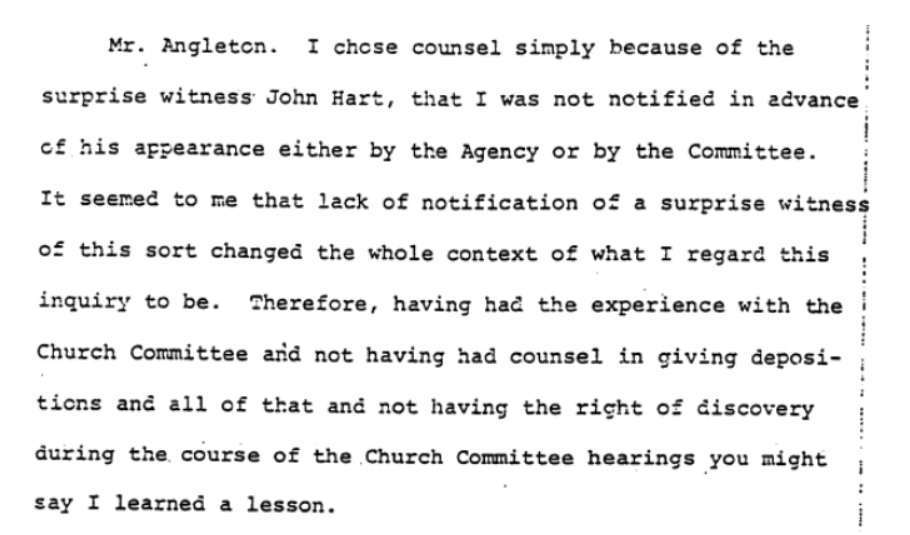
Additional questions are raised by Angleton’s FBI file, which asserts that while he was still under contract with the Agency and that while the Agency had helped arrange for his lawyer, Angleton was briefing the FBI, but not the CIA, about his Church Committee testimony. If this is true, it would seem to indicate that Colby may have been kept out of the loop on Angleton’s activities rather than deliberately lying to the Church Committee about them. The Bureau appears to have decided not to inform Colby, lest their interest in Angleton be “misconstrued.”
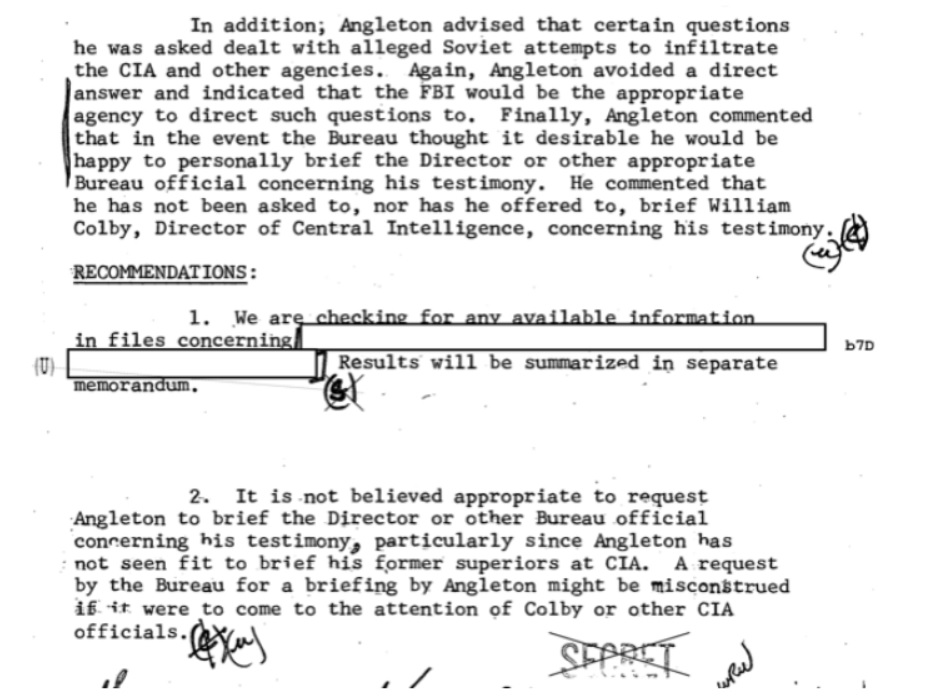
No mention is made in the file about Angleton’s testimony to the Rockefeller Commission while under contract with CIA. According to a declassified memo from Vice President Rockefeller, Angleton testified that “the counterintelligence activities of the CIA had been seriously undercut by certain organizational changes instituted by Colby. Angleton’s presentation so impressed the Commission members that he was asked to prepare a special memorandum on the subject.“ According to the Rockefeller memo, Angleton’s memo and its recommendations would have been included with the Rockefeller Commission Report had it been delivered any sooner.
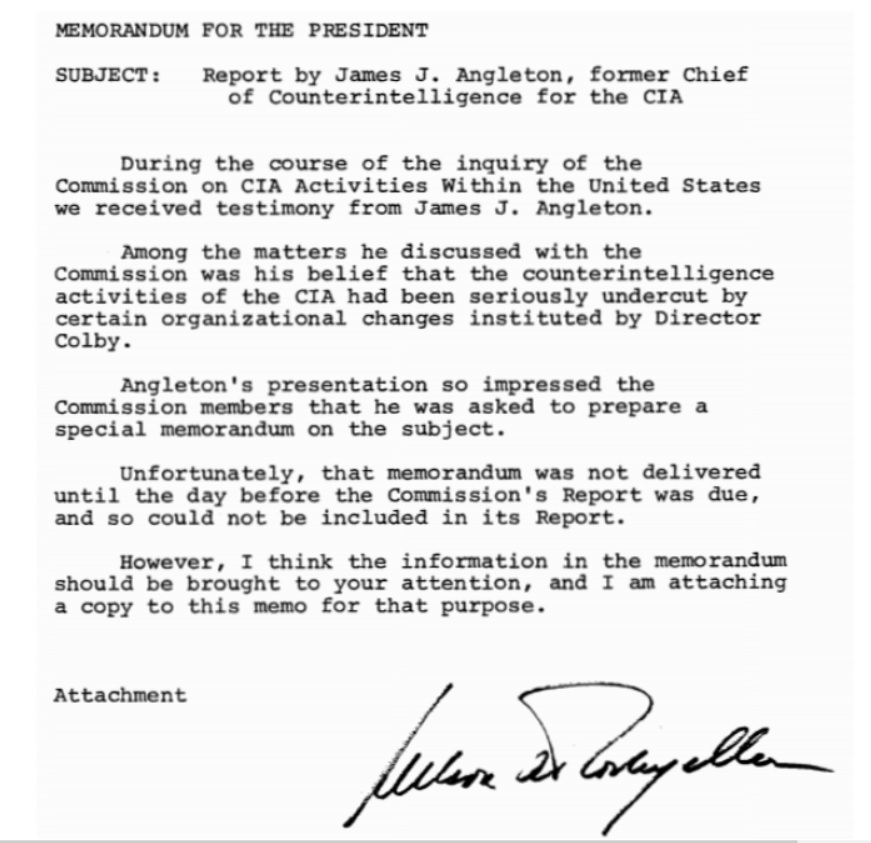
Shortly after Angleton briefed of the FBI about his Church Committee testimony, and about two months before his contract with the CIA was set to expire, Angleton was again in contact with the FBI. This time, Angleton was requesting information instead of providing it. Angleton wanted “public source material relating to the Bureau’s assessment of the hostile foreign intelligence threat and the importance of counterintelligence.” The Bureau recommended providing him with the information, almost certainly helping lay the groundwork for some of Angleton’s work the American Security Council and the Security and Intelligence Fund/Foundation.
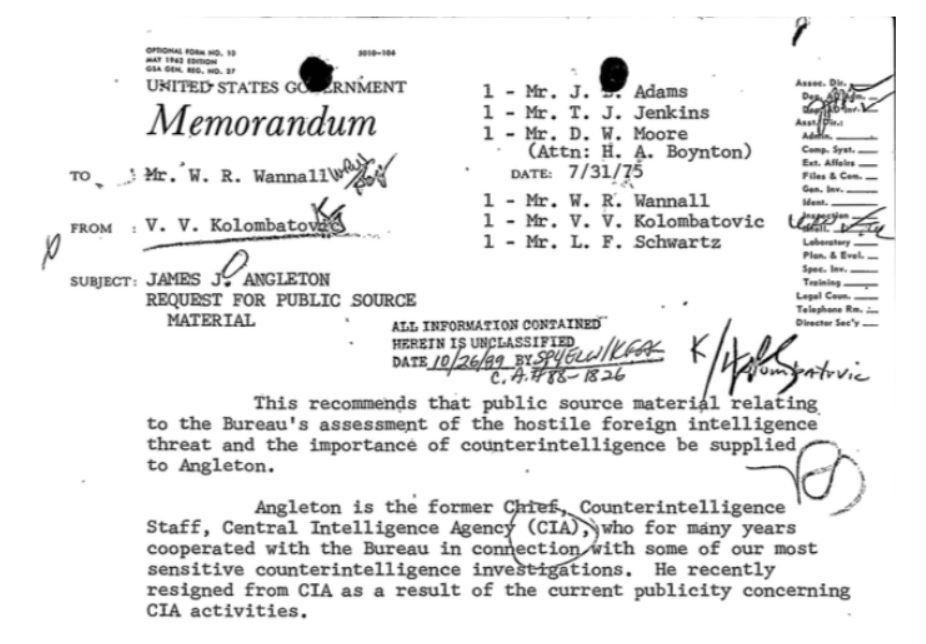
Perhaps most significantly, the description of Angleton’s activities while under a CIA contract is disputed by declassified documents. While an unnamed spokesperson previously described Angleton’s consultation as simply helping with the transition and a current spokesperson declined to comment on it at all, an internal CIA history describes Angleton’s work as operational. According to the declassified history, “during the period of 1973-75, operational issues remained solely the preserve of Angleton and his operations chief.” While the name of the operations chief is redacted in the history, it refers to Newton S. Miler - who had, according to Colby, agreed to stay on for a time along with Angleton and his other deputies, Raymond Rocca and William Hood.

The Agency has declined to explain or attempt to reconcile any of these apparent discrepancies, or to describe Angleton’s relationship with the Agency either during the time of his contract or in the following years.
In one curious instance, shortly after Colby was replaced by George H.W. Bush in early 1976, a member of the President’s Foreign Intelligence Advisory Board (PFIAB) referenced Colby’s previous dismantling of CIA’s counterintelligence and said Colby had left it “confused.” Lamenting the Agency’s loss of institutional knowledge and experience for counterintelligence in the form of “the top people in counterintelligence,” the PFIAB member recommended that Bush speak to Angleton. When asked if the recommendation to the President was followed and if Angleton had briefed then-CIA Director Bush, the Agency once again declined to comment.

The Agency similarly declined to comment on Angleton’s consulting with the Agency in 1983, or his work with Accuracy In Media, the American Security Council, or the Security and Intelligence Fund - all members of the Common Interest Network, CIA’s “unofficial intelligence community.”

Before his death, Angleton himself appears to have been similarly loath to admit that his relationship with the Agency was anything but over after December 1974. In addition to omitting any mention of it in his Church Committee testimony, the SF-86 form filled out by Angleton in June 1980 traces his Agency employment from its predecessor organizations through December 1974. According to national security attorney Mark Zaid, he would have been expected to list the 1975 contract with CIA on the SF-86 from 1980 “unless it was covert.”
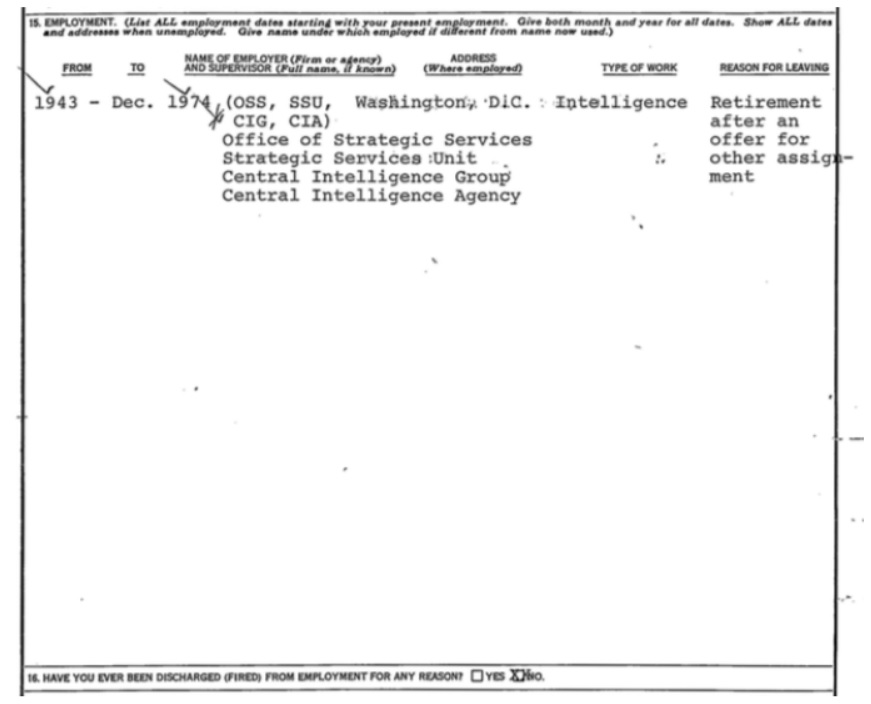
The scarce information and the Agency’s refusal to comment make it impossible to reconcile the contradictions. While Cram and Colby both indicated a six month timeline essentially beginning when Angleton was forced into retirement, that doesn’t coincide with either the dates of the clearance or the six month contract, both of which began several months after Angleton’s retirement. Angleton was spotted going to work at CIA Headquarters on March 4th, 1975 - a week after his clearance was granted on February 26th but before the contract began on April 1st. Not only can their dates not be reconciled with the security clearance, they are at odds with Trento’s reporting that Angleton took nine months to clear out his desk. However, Trento’s reporting not only indicates a departure in September that’s consistent with the dates of the contract - it suggests that Angleton might not have left the Agency before his contract began.
The most consistent explanation is that Angleton barely left the Agency after his forced retirement, returning for work that required a Top Secret clearance and lasting nine months. During this time, the CIA Director was either kept out of the loop or mislead the Church Committee. According to several accounts, Angleton’s contract work with the Agency reportedly went beyond a mere payoff into retirement or even introducing people to his replacement. During this time, Angleton says he was kept “on ice” for the Church Committee while one of CIA internals histories says “operational issues” remained under the sole purview of Angleton and Miler. Each of these often contradictory explanations, however, raises more questions - questions which can only be answered by the documents CIA has failed to release.
Check back tomorrow for the next part in this series, which will explore the potentially libellous “Monster Plot” Report from John Hart. In the meantime, you can read Angleton’s report to the Rockefeller Commission here, or embedded below..
Like Emma Best’s work? Support her on Patreon.
Image by Richard Avedon via The Metropolitan Museum of Art




